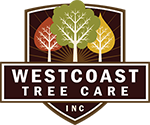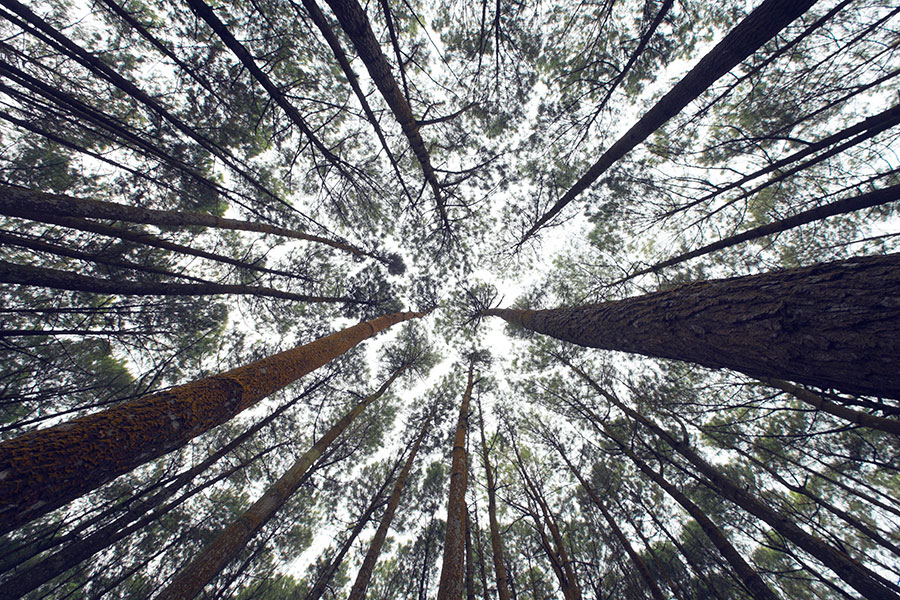An arborist, by definition, is a tree care specialist in the cultivation and care of trees and shrubs, including tree surgery, the diagnosis, treatment, and prevention of tree diseases, and the control of pests. Some definitions refer to Arborists as “tree surgeons,” and as a doctor is knowledgeable about the body, an arborist is knowledgeable about the needs of trees and are trained and equipped to provide proper care. Just as with a healthcare provider, great care should be taken in hiring the right arborist.
Proper tree care is an investment that can lead to substantial returns. Well-cared-for trees are attractive and can add considerable value to your property. Poorly maintained trees can be a significant liability. Pruning or removing trees, especially large trees, can be dangerous work. Tree work should be done only by those trained and equipped to work safely in trees.
A Certified Arborists is someone who has achieved a level of knowledge in the art and science of tree care through experience and by passing a comprehensive examination developed by some of the nation’s leading experts on tree care. The International Society of Arborists has been around for over 90 years and runs the certification program. Certified Arborists must also continue their education to maintain their certification and adhere to a Code of Ethics. Therefore, they are more likely to be up to date on the latest techniques in arboriculture.
Becoming an ISA Certified Arborist is a voluntary process through which individuals can measure their knowledge and competence required to provide proper tree care. ISA Certification is not government-sponsored or government-endorsed; it is administered by the International Society of Arboriculture as a way for tree care professionals to demonstrate their commitment to the profession and the industry. Not every Arborist is Certified.
Preventative Tree Care
Watch Out for Insect Pests in Your Deciduous Trees. While insects are an important food supply for the local bird population, the birds never seem to eat enough of them. Insect pests are one of the most common issues that plague deciduous trees.
Some insects are species specific, such as the sycamore lace bug. Others chew on anything from the stately elm lining the street, to the poplar forming a windbreak or maple tree adding brilliant color to the autumn landscape. Some insects bore into the tree, cutting off the tree’s circulatory system. Others just suck away somewhat symbiotically, gradually draining away the tree’s life forces.
Insects sometimes make their presence known through dramatic displays of webs. You may wonder if those webs in your tree are something to worry about. Should you be concerned about insects stripping your trees of leaves?
The answer is, “It depends.” While in most cases, insect defoliation is a cosmetic yet not life-threatening to your deciduous trees, it should never be ignored. A mild infestation ignored this year will become an even heavier influx next year. It doesn’t take long for a particular insect to become a plague. Some insects may even become a serious nuisance in your home as well as in your trees.
Consider the sycamore lace bug. It rarely causes serious damage, yet when populations get out of control it can stunt the growth of the tree. You’ll find adults and nymphs sucking plant juices from the tree on the underside of the leaf. They do have natural enemies, so using pesticides should be a last resort for a severe infestation. Sometimes a simple solution is available. For example, a strong spray of water is often adequate to dislodge the bugs.
Many of the most destructive insects are only seen through close inspection. This means many trees go into decline with hardly a warning. This is because the type of damage caused by different classes of insect pests varies. For example, leaf feeding insects cause less damage than boring insects which prefer to eat directly upon the tree’s nutrient carrying layers, the cambium and xylem. This often kills the tree within a season or two.
Early detection of tree boring insects is vital. If you have aspen, cottonwood, willow, birch or ash trees on your property, having a certified arborist inspect your trees for the signs of borer activity is a wise investment. If these signs are discovered, the arborist can help you set up an integrated pest management plan that is kind to the environment while preserving the health of your trees.
Because treatment must be matched to the type of insect, the best results are obtained by working with a certified arborist. These professionals also help you identify factors that could be putting your trees at risk for insect infestation such as poor drainage, inappropriate mulching or failure to prune appropriately.
Diseases and Insect Infections to Watch for In Your Cottonwood and Elm Trees
Cottonwood and elm are both beautiful, fast-growing deciduous trees. The tall stately appearance of either tree can be an attractive complement to any landscape. Unfortunately, there are diseases and insects which plague these trees.
Slime Flux
This bacterial infection gets its name from the frothy slime that oozes out of the tree bark after infection. The ‘foam’ dries leaving a dry scum.
Wounds in the bark provide the source of entry. Weed eaters, improper pruning or even the family cat can break the bark. The bacteria enters the tree through these wounds.
The type of slime flux that targets the heartwood of the tree is of most concern in cottonwood and elm. In heartwood infections, the bacterial digestion of the wood creates internal pressures up to 60 lbs./sq. in. In most cases this pressure is relieved through a crack in the bark. The oozing slime is the first evidence that the bacteria is fermenting the cellulose of the tree. The bark dies as the bacteria infected slime infects it. The slime also kills any grass it comes in contact with.
The life of the tree may be extended if a certified arborist drills a hole in the infection site and inserts a pvc pipe into the tree. The pipe allows the slime to drain away from the tree even though it doesn’t cure the infection.
The bacterial flux that infects the cambium and bark layers produces a foul smelling slime. If caught early, the tree may be saved. A certified arborist can excise the infected sections. Once more than half of the tree trunk is involved, complete removal of the tree is usually the only choice.
Aphids, Scale & Mealybug
All three of these insect pests are sucking insects which feed on plant juices. They infect the new, tender growth of the tree.
Aphids like cottonwood, especially if there is a local ant population as well. The trees will start ‘dripping’ with a sap-like liquid. The best way to treat for aphids is to spray with insecticidal soap and put out ant traps that use boric acid.
Scale and mealybug are more difficult to eradicate. If regular treatments with insecticidal soap don’t clear up the infestation, it may be necessary to remove the infected portions of the tree. This is an operation best performed by a certified arborist.
Borers
There are a number of borers which are attack cottonwood and elm. Signs of an infestation include shoots that turn black, shrivel and then die. The larvae burrow into the phloem which can severely damage young or stressed trees.
Leaf Beetles
The cottonwood leaf beetle is 1/4-inch long. The beetle can completely defoliate a cottonwood tree.
The elm leaf beetle is especially prolific. If warm weather continues long enough into the fall, three generations of beetles may hatch in one year. Both adults and larvae eat the underside of the leaves. The leaves then dry up and then drop.
Consult with a certified arborist if you suspect a leaf beetle infestation. Prevention and control can save more than your tree. It can also reduce problems with beetles moving into your home for shelter in the winter.
Defoliation and Deciduous Tree Decline
It’s normal as cold weather sets in for deciduous trees such as the elm, sycamore, cottonwood, poplar and maple to shed their leaves after displaying the lovely change in colors we’ve all come to associate with autumn. At any other time of year, loss of leaves is a serious issue that could lead to decline and even death of your deciduous trees.
Identifying the cause of premature or non-seasonal defoliation is important for the long-term health of your tree. The problem may be caused by insects, disease or a combination of both. Often inexperienced homeowners overlook the real cause of defoliation. By the time they call in an expert, it may be too late to save the tree.
Arborists know that the leaves of your deciduous trees can be one of the first indicators that your tree is in trouble. They assess how the problem began. Were the first symptoms off color or yellow leaves, brown spots, bumps, or deformed or ragged leaves? Or did cankers appear in the bark?
Off color leaves often indicate a nutrient deficiency, yet without a careful inspection of the tree, it is impossible to determine whether this is a sign of poor soil nutrient composition or another factor. The wrong soil pH could be tying up nutrients, root injury or construction damage could be contributing factors.
A certified arborist will test the soil as well as look at conditions around the tree. If tests show that adequate nutrients are present, then testing for common diseases of the specific deciduous tree is the next step to choosing a course that will save your tree.
Other symptoms such as spots, irregular necrotic areas and bumps are typically signs of fungal or bacterial infection. Leaf spots such as maple Tar Spot has been associated with significant leaf drop. In spring when weather is wet and cool, anthracnose can quickly defoliate sycamores, maples and ashes as well as cause branch tips to die back. Powdery mildew can lead to premature leaf drop in the fall.
When leaves turn color and drop early, this can also be a symptom of vascular compromise. Other signs of vascular disease including wilting before the foliage dries up and drops.
Canker infections are usually caused by a fungus or bacteria. They can girdle the entire trunk of a tree if left untreated.
Insect infestations should also concern homeowners. Tent caterpillars continue to be abundant in central Puget Sound. Western oak looper may also cause serious defoliation. So far efforts to prevent spread of the destructive citrus long horned beetle have been effective in Tukwila and Lacey.
Severe infections that occur year after year can lead to decline, because the tree’s ability to convert adequate supplies of carbohydrate through photosynthesis can’t keep ahead of the energy the fungi or bacteria drains from the tree. It is important to identify what is causing defoliation as quickly as possible. This enables you to work with your local arborist to develop a plan of action for restoring your tree’s health.








